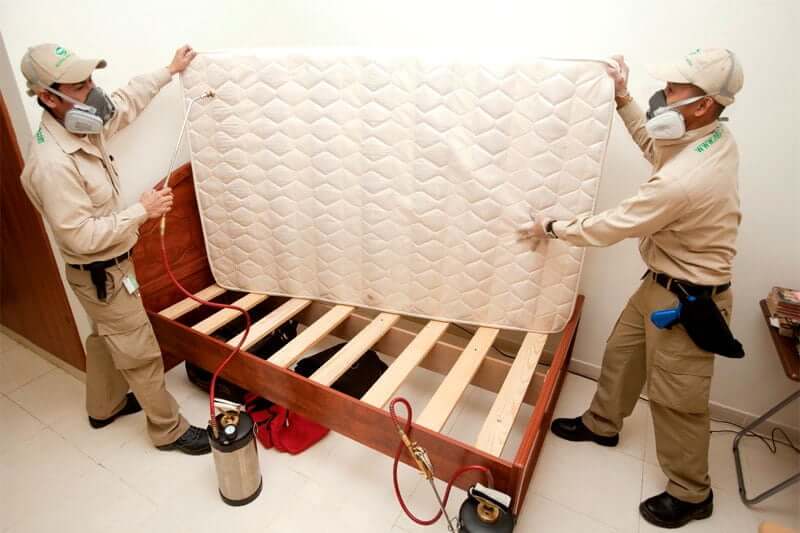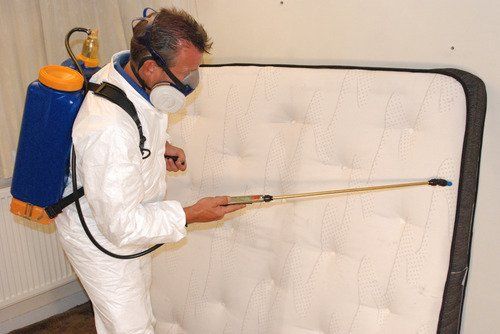Get Enlightened Regarding the Kinds of Pest Control Techniques and Their Advantages for Property Owners
Recognizing the numerous parasite control approaches readily available to home owners is essential for effective pest monitoring. Home owners that are knowledgeable can make tactical choices that not only address pest concerns yet likewise boost the general high quality of their living environment.
Chemical Pest Control Approaches
Chemical bug control techniques are an important element of integrated insect management strategies for home owners looking for efficient solutions to pest problems. These techniques involve the application of chemical materials developed to eliminate or hinder bugs that threaten individual home, health, and convenience. Typical chemicals made use of consist of insecticides, herbicides, fungicides, and rodenticides, each tailored to target details bugs.
The primary benefit of chemical pest control is its fast efficiency; many formulas provide instant outcomes, decreasing pest populaces significantly quickly. In addition, breakthroughs in chemical formulas have caused items that are much more eco friendly and have lower toxicity degrees for non-target microorganisms when applied properly.

Biological Pest Control Strategies
Natural pest control approaches have gained prestige as house owners seek more secure and a lot more sustainable options to traditional chemical strategies. Biological pest control methods utilize all-natural predators, bloodsuckers, or microorganisms to manage pest populaces efficiently. This approach is not only eco-friendly but likewise reduces the threat of damage to non-target types, including valuable bugs and wild animals.
One of one of the most usual biological control approaches involves presenting natural killers into the setting. Ladybugs can be used to regulate aphid populations, while nematodes target soil-dwelling insects like grubs. Furthermore, parasitoids-- microorganisms that live on or within a host-- can be utilized to regulate specific bug varieties by laying eggs inside them, ultimately causing their death.
Another approach is the use of biopesticides, which are originated from natural materials such as microorganisms, plants, or minerals (bed bug exterminator). These items can successfully target parasites while positioning very little danger to human beings and pet dogs. In general, biological bug control techniques offer house owners with a reliable methods of parasite monitoring that straightens with ecological principles, advertising a much healthier living environment while minimizing dependence on artificial chemicals
Mechanical Parasite Control Approaches
Mechanical parasite control approaches incorporate a selection of approaches that literally protect against or remove insects without making use of chemicals. These methods are specifically advantageous for home owners seeking eco-friendly alternatives while making certain the safety of their space.
One common technique is using obstacles, such as nets, displays, and catches, which stop insects from going into homes or specific locations. For example, setting up window displays can successfully keep pests out, while making use of physical barriers around yards can hinder bigger insects like rabbits or deer. Additionally, mechanical catches designed for rats can capture and get rid of these insects without the requirement for toxic compounds.
Another efficient strategy includes making use of vacuum cleaners and brooms to get rid of pests straight from surfaces. Normal cleaning and upkeep can substantially reduce bug populaces by getting rid of food resources and hiding areas. Furthermore, utilizing tools like ultrasonic insect repellents can prevent various insects via sound waves that are unpleasant to them but faint to human beings.
Social Pest Control Practices
Cultural bug control techniques concentrate on modifying the atmosphere and monitoring strategies to develop conditions that are less helpful to pest infestations. These practices are fundamental in preserving a well balanced community and minimizing the dependence on chemical interventions. By changing agricultural methods, house owners can successfully hinder pests while promoting plant health.
One common approach includes plant turning, which interferes with the life process of parasites by transforming the sorts of plants expanded in a details location (bed bug exterminator). This not just decreases pest populations but also improves soil wellness. Additionally, intercropping-- growing varied plants in distance-- can puzzle insects and lower their ability to situate their recommended host plants
Water monitoring is one more essential facet of cultural practices. Proper watering methods can prevent standing water, which serves as a breeding ground for insects and various other parasites. Furthermore, keeping tidiness in and around the home, such as routinely eliminating debris and food waste, can dramatically minimize insect destination.
Integrating these cultural practices right into a comprehensive parasite management approach permits home owners to produce an atmosphere that normally deters pests, consequently improving the efficiency of various other control approaches while promoting lasting horticulture and landscaping.

Integrated Insect Management Approaches
Integrated Insect Administration (IPM) stands for a holistic approach that integrates different methods to effectively manage pest populations while lessening ecological influence. This technique incorporates biological, carpenter ants social, physical, and chemical practices to achieve sustainable insect control. By assessing pest populations and their all-natural enemies, IPM stresses tracking and recognizing parasites prior address to executing control procedures.
Among the core concepts of IPM is using thresholds, which develop the level of parasite task that calls for treatment. This ensures that therapies are used only when needed, lowering the dependence on chemical pesticides. Organic control approaches, such as presenting all-natural killers or bloodsuckers, operate in conjunction with social practices like crop turning and environment control to disrupt pest life process.
Furthermore, IPM urges using least-toxic chemical choices when intervention is necessary, prioritizing products that posture marginal danger to non-target microorganisms and the setting. For homeowners, embracing IPM approaches not just improves the effectiveness of bug administration yet also promotes a healthier living environment, cultivating biodiversity and minimizing chemical direct exposure. Eventually, IPM equips home owners to make informed decisions that stabilize insect control with ecological duty.
Final Thought
In verdict, comprehending the different insect control methods equips homeowners to make enlightened decisions concerning pest monitoring. Each strategy-- chemical, organic, mechanical, cultural, and incorporated bug monitoring-- offers distinct advantages that cater to various requirements and preferences.
Recognizing the various bug control approaches available to property owners is essential for effective parasite administration.Chemical insect control methods are a critical component of integrated parasite management methods for property owners seeking efficient solutions to pest infestations. In general, biological pest control methods provide house owners with an effective ways of parasite management that aligns with my site ecological principles, promoting a much healthier living environment while minimizing dependence on artificial chemicals.
Social insect control methods concentrate on customizing the atmosphere and administration strategies to produce problems that are less favorable to pest problems.In conclusion, recognizing the different pest control approaches empowers property owners to make educated decisions concerning pest monitoring.